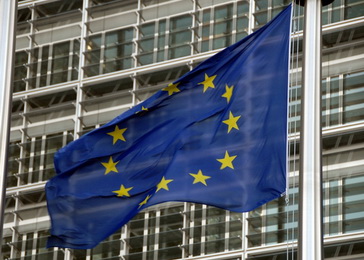 Serbia should continue reducing its budget deficit, give fresh momentum to the reform of state-owned enterprises and promote the development of the private sector through improved control of para‑fiscal charges – these are some of the recommended measures jointly adopted by Serbia and the Economic and Financial Affairs Council (ECOFIN) on 23 May. The aim of these reforms is to reduce the budget deficit and encourage the sources of economic growth. Economic recommendations were also given to other EU accession candidates and potential candidates.
Serbia should continue reducing its budget deficit, give fresh momentum to the reform of state-owned enterprises and promote the development of the private sector through improved control of para‑fiscal charges – these are some of the recommended measures jointly adopted by Serbia and the Economic and Financial Affairs Council (ECOFIN) on 23 May. The aim of these reforms is to reduce the budget deficit and encourage the sources of economic growth. Economic recommendations were also given to other EU accession candidates and potential candidates.
This year, the third annual Economic Reform Programmes (ERP) for the period 2017–2019 were submitted to Brussels by the candidate and potential candidate countries for EU membership. The assessment of these programmes was conducted by the European Commission and the European Central Bank and, based on these assessments, all seven partners in the enlargement process and the EU adopted joint conclusions and country-specific guidance at the ministerial level.
Serbia has received six recommendations, two of which refer to the macro-fiscal framework, one addresses the financial sector stability, while three propose sector-specific structural reforms that need to be implemented over the next year.
The first recommendation for Serbia is to keep reducing its budget deficit in 2017. Another one is to support the fiscal scenario over the next year by reinvigorating the reforms of state-owned enterprises and the tax administration, as well as to decrease the GDP share of public expenditure on wages and pensions. Furthermore, it is recommended to reduce the number of para-fiscal charges at state level. In the field of labour, Serbia should decrease the high non-wage cost of jobs in areas where wages are the lowest, adopt measures for employment of vulnerable groups, including social assistance beneficiaries, and develop dual education and training in close cooperation with social partners and the business sector.
The assessment of Serbia’s ERP states that economy expanded faster than expected in 2016 and the growth was forecast to firm up slightly underpinned by private consumption, while investments and export are expected to remain robust. It is emphasised that fiscal consolidation continued to be very strong, causing the public debt to GDP ratio to fall for the first time in many years. The identified structural obstacles to growth and competitiveness included an excessive state influence in the economy and a lack of dynamism in the private sector. The conclusions state that private sector development remains hampered by a costly, unpredictable and non-transparent system of para-fiscal charges, difficult access to finance, red tape and a large informal economy. The assessment of Serbia’s economic programme also finds that young people face particular difficulties in labour market access, thus leading to brain drain.
Source: EurActiv.rs
 Government of the Republic of Serbia
Government of the Republic of Serbia















 pdf [271 KB]
pdf [271 KB]
Leave a Comment